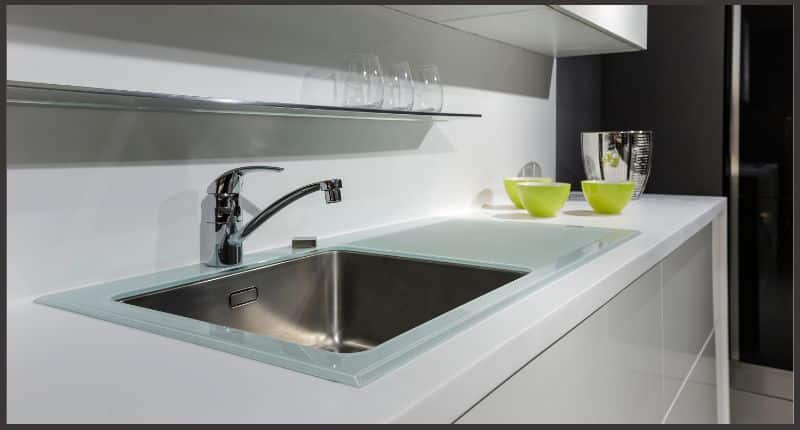Maintaining a clean cutting board is essential for food safety and kitchen hygiene. Whether you’re slicing, dicing, or chopping, your cutting board is a culinary workhorse and ensuring it’s properly cleaned can keep cross-contamination at bay and extend the life of your board. With a variety of materials like wood, plastic, and bamboo, each type may require specific care. In this guide, we’ll walk through the simple yet effective steps to clean and maintain your cutting board thoroughly, ensuring it remains a safe, sanitary surface for all your meal prepping needs. Let’s get started on the path to a germ-free kitchen staple.
How to Clean a Cutting Board: Ensuring Your Kitchen’s Safety and Hygiene
When it comes to keeping a kitchen clean and sanitary, few tasks are as crucial as knowing how to clean a cutting board. Cutting boards are the workhorses of the kitchen, constantly in use for chopping vegetables, slicing fruits, and carving meats. But with each use, they can collect bacteria, stains, and odors, making proper cleaning essential not only for the life of the board but, more importantly, for your health.
## Why a Clean Cutting Board Matters
Imagine you’re slicing juicy, ripe tomatoes on a wooden board where, just hours earlier, chicken breasts were being trimmed—without adequate cleaning in between. The potential for cross-contamination is significant, turning what should be a nutritious meal into a health hazard. According to the USDA’s Food Safety and Inspection Service, improper handling and preparation of foods can lead to foodborne illness. Hence, a clean cutting board is synonymous with a safe kitchen.
## Different Boards, Different Cleaning Methods
### The Wooden Cutting Board Conundrum
Wooden boards are beautiful and enduring, but they can also be an abode for bacteria if not handled correctly. To start with, after each use, they require a thorough scrub with hot, soapy water. I learned this the hard way when, after a quick rinse of my cherished maple board, I found it stained and foul-smelling the next day. An essential tip I picked up is to sprinkle salt on the surface and rub it with a cut lemon before the soapy water bath. The salt acts as an abrasive, and the lemon’s acidity helps sanitize and remove stains, leaving the wood fresh and vibrant.
For a deep clean, once a month, I massage a mixture of baking soda, salt, and water into the board and let it sit before giving it another lemon treatment. Afterward, rinsing and drying it completely are vital to hinder mold growth.
### Navigating the Plastic Cutting Board Maze
Plastic boards, meanwhile, are heralded for their ease of maintenance—they’re dishwasher safe, after all. However, even with the high heat of a dishwasher, some resilient bacteria might cling to the grooves that knives leave over time. This is where a bleach solution (a teaspoon of bleach to a quart of water) can save the day. Soaking the board for a few minutes in this solution will disinfect it thoroughly. Just be sure to rinse the board well with plain water afterward!
## Seasoning Your Cutting Board: A Chef’s Secret
Just as cast iron pans are seasoned to enhance their performance and longevity, so should wooden cutting boards be treated. After washing and drying, coat your wooden board with mineral oil or beeswax. This seasoning not only builds up a protective barrier but also keeps the board from drying out and cracking. Repeating this process every few weeks will help maintain the board’s integrity and make cleaning easier in the long run.
## When it’s More than Just Dirt: Stain and Odor Removal Techniques
Stains and odors can be particularly stubborn on cutting boards. For instance, after dicing garlic and onions, the scent may linger. Creating a paste of baking soda and water, then spreading it across the surface, and leaving it for a few minutes before rinsing, can work wonders.
For more significant stains, like those from berries or beets, the lemon and salt technique often needs an encore. Persistence and patience are key—the natural cleaners may need a few applications, but they are usually effective without harming the board’s surface.
## Debunking the One Board for Everything Myth
While it might seem convenient to use one cutting board for all tasks, it’s a risky shortcut. The cross-contamination risks are too high. Instead, the smart move is to have multiple boards and designate them for different uses—one strictly for raw meats, another for vegetables and fruits, and perhaps a third for cooked foods. This strategy augments your kitchen safety multiple-fold.
## Discarding When Due: Knowing When to Say Goodbye
Even the most cherished cutting board has a lifespan. When deep grooves and cracks become a refuge for bacteria, cleaning might no longer be sufficient, no matter how thorough. At this point, for the sake of health, it’s time to retire the old board. It’s not just the end of an era; it’s the opportunity to start afresh with a new surface, bringing the lessons learned from its predecessor into practice.
## Expert Opinions and Anecdotes
Renowned chefs and kitchen safety experts unanimously agree on the importance of keeping cutting boards clean. Chef Julianna, a proponent of sustainable kitchens, shares, The cutting board is your canvas—keep it clean, and your art will flourish. Neglect it, and your masterpiece could turn into a disaster. The emphasis on practice and regularity in cleaning is a constant theme in conversations with professionals.
## Conclusion: The Art of Maintaining a Pristine Cutting Board
Learning how to clean a cutting board is an essential aspect of kitchen hygiene. Regular cleaning, effective stain and odor removal, proper seasoning, and prudent practices are all integral to the life of your cutting board and the safety of your meals. It’s a simple, yet vital, part of the culinary arts. Keeping a cutting board pristine is not just about cleaning; it’s about respecting the tools of the trade and the food that graces them.
Remember, a clean cutting board is the foundation of a trustworthy kitchen. Take pride in this basic, yet profound, act of kitchen care, and each dish you prepare will be a testament to your commitment to quality and safety.
So, the next time you’re in the kitchen, give your cutting board the attention it deserves. It’s not only an investment in the tool itself but also in the health and enjoyment of those who will savor the meals created upon it.

Photo by Ian Schneider on Unsplash
Table of Contents
Additional Guide
For related tips on maintaining other kitchen essentials, you might find our guide on how to clean and maintain your wooden cutting board quite helpful. If you’re curious about upkeep for the rest of your kitchenware, explore our article on how to clean bakeware to keep it in top condition. And after you’ve mastered cutting board cleanliness, brush up on your prepping skills with our comprehensive overview of 10 basic knife cuts to enhance your culinary expertise.
FAQs: How to clean a cutting board
How often should I clean my cutting board?
You should clean your cutting board after every use to prevent cross-contamination and the growth of bacteria. If using the same board for raw meats and then for other foods, wash it immediately before proceeding to other foods.
What is the best way to clean a wooden cutting board?
To clean a wooden cutting board, use warm soapy water and scrub it with a brush or sponge. Avoid soaking it in water as that can cause the wood to split and warp. After washing, rinse it and dry it immediately with a towel. You can also sanitize the wooden board with a solution of 1 tablespoon of unscented, liquid chlorine bleach per gallon of water.
Can I put my cutting board in the dishwasher?
Plastic, composite, and glass cutting boards are generally dishwasher-safe. However, wooden and bamboo cutting boards should not be put in the dishwasher as the heat and water can damage them. Check the manufacturer’s instructions to be sure.
Is it necessary to use separate cutting boards for different types of food?
Yes, it is recommended to use separate cutting boards for raw meat, poultry, and seafood to prevent cross-contamination with vegetables, fruits, and ready-to-eat foods. Consider using color-coded cutting boards to keep them separate more easily.
How can I remove stains and odors from my cutting board?
To remove stains and odors, sprinkle baking soda, salt, or lemon juice on the cutting board. Scrub the surface using a lemon half or a sponge, then rinse with water. For deeper stains, you may need to let the cleaning agent sit for a few minutes before scrubbing.



